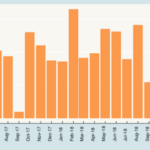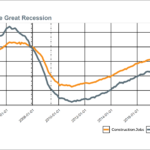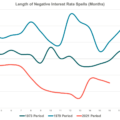The September Employment Situation – Fall Fear Relieved

A bad string of manufacturing numbers reignited recessionary fears this week, but the growth of 136,000 jobs in September this morning serves as a timely reminder that a recession is not a foregone conclusion.
There are five important things we need to keep in mind going into the fall:
- First, the September unemployment rate of 3.5 percent is historically very low. We shouldn’t be expecting any big dramatic upturns or a faster pace of job creation at what is currently the economy’s peak employment. With no opportunity for big surprises, the only options for upswings are these modest gains like we saw today.
- Second, there is nothing that says the current expansion must come to an end. While we have the longest expansion to date, it has not produced the historical level of growth during its course that we’ve had over expansions in the past; and nothing in economic theory (or practice) suggests expansion duration or magnitude have a maximum life span.
- Third, not all the friction we see is the result of tariffs and trade policy, although that is exacerbating existing global market friction with added costs to supply chains and uncertainty about the eventual policy outcomes.
- Fourth, if the trade policy disputes are resolved, or the fed continues to lower interest rates, some of the headwind effects from global developments will be mitigated.
- And fifth, we are a consumer driven economy, so long as consumer sentiment remains high, it is unlikely we will have a recession based on manufacturing and trade weakness alone.
What does all this mean for home service professionals and consumers? Services are not as sensitive to swings as manufacturing is. In the great recession, manufacturing jobs plummeted at three times the rate as service jobs, with a nearly 20 percent reduction in manufacturing employment while service employment dropped only about 4 percent. While inventories and commodity prices and big factory overheads are sensitive to the macro economy, a hole in your roof requires fixing regardless of what global trade flows are doing.
The home service market, and other service sectors like healthcare, can serve as important employment and demand stabilizers for us all, during this period while other sectors of the economy are more volatile.







 Press & Media Inquiries
Press & Media Inquiries Angi Economics
Angi Economics